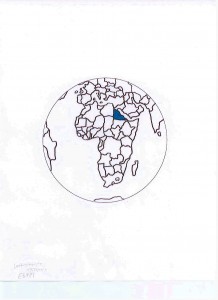A. THE COUNTRY
The Arab Republic of Egypt is mainly in North Africa with the Sinai Peninsula forming a bridge in Southwest Asia. Most of the 84.5 million people live near the banks of the Nile River, away from the Sahara Desert. Egypt is famous for its ancient civilization and possesses one of the most developed and diversified economies in the Middle East, with sectors such as tourism, agriculture, industry and service. A large proportion of people live in poverty – most blame institutionalized corruption, a bloated public sector and recent economic advances that fail to trickle down to the masses. The overthrow of President Mubarek in early 2011 was a landmark event in modern Egypt and has profound repercussions for the Middle East.
B. THE PEOPLE
Over 92% are Egyptian, speaking Arabic. Other Arabic speaking minorities are: Berber 2%, Gypsy (DOM) 1.4%, Nubians 1.1%; westerners are 0.8%, and refugees 2.4%. Functional literacy is below 50%.
C. RELIGION AND CHRISTIANITY/PENTECOSTALISM
Islam is the state religion; until recently the large Christian minority were left in relative peace. The last 20 years have seen an intensification of discrimination and persecution, but there is a lot of life in all branches of the Church. 86.7% are Muslim, ~12.8% claim to be Christian. Egypt gave to the world some of the greatest theologians and the monastic movement. Egyptian Christians may be more clearly linked to the original Egyptian civilization that pre-date the coming of Islam.The Orthodox church has 11.6% of the affiliates, followed in size by Protestants at 0.75%, and Catholics at 0.39%. Evangelicals represent 3.9% of the population. Charismatics are at 1.9%, of which 0.3% are Pentecostals.
Donna Siemens
References:
http://en.wikipedia.org
Operation World, Jason Mandryk. Colorado Springs: Biblica Publishing, 2010.

